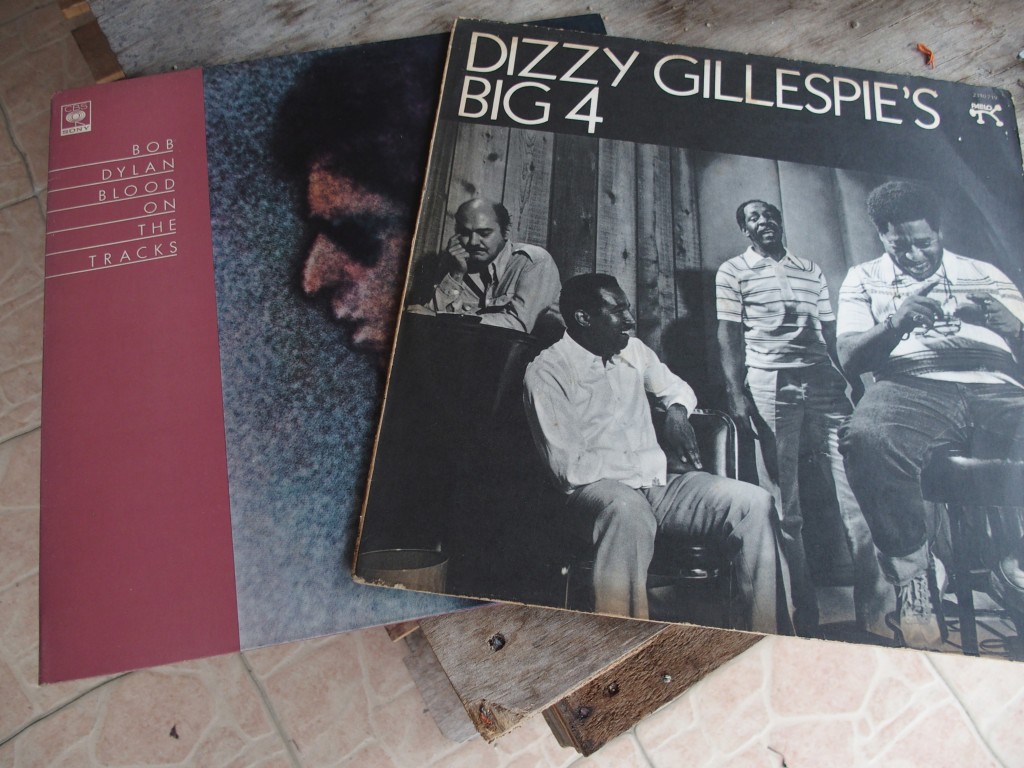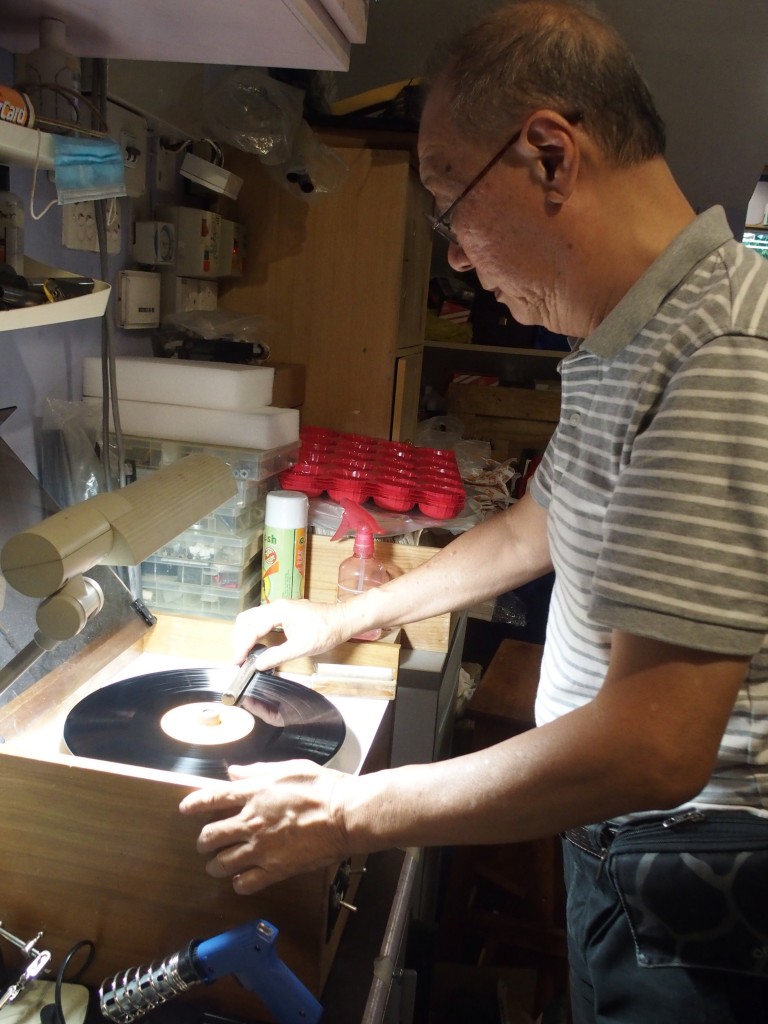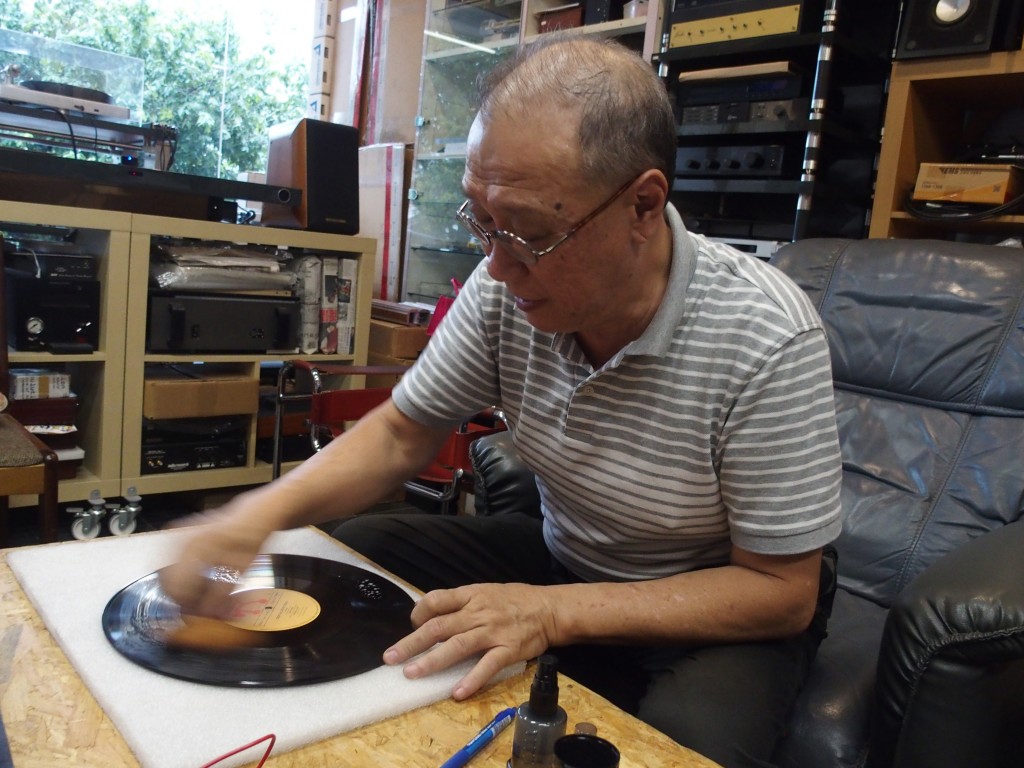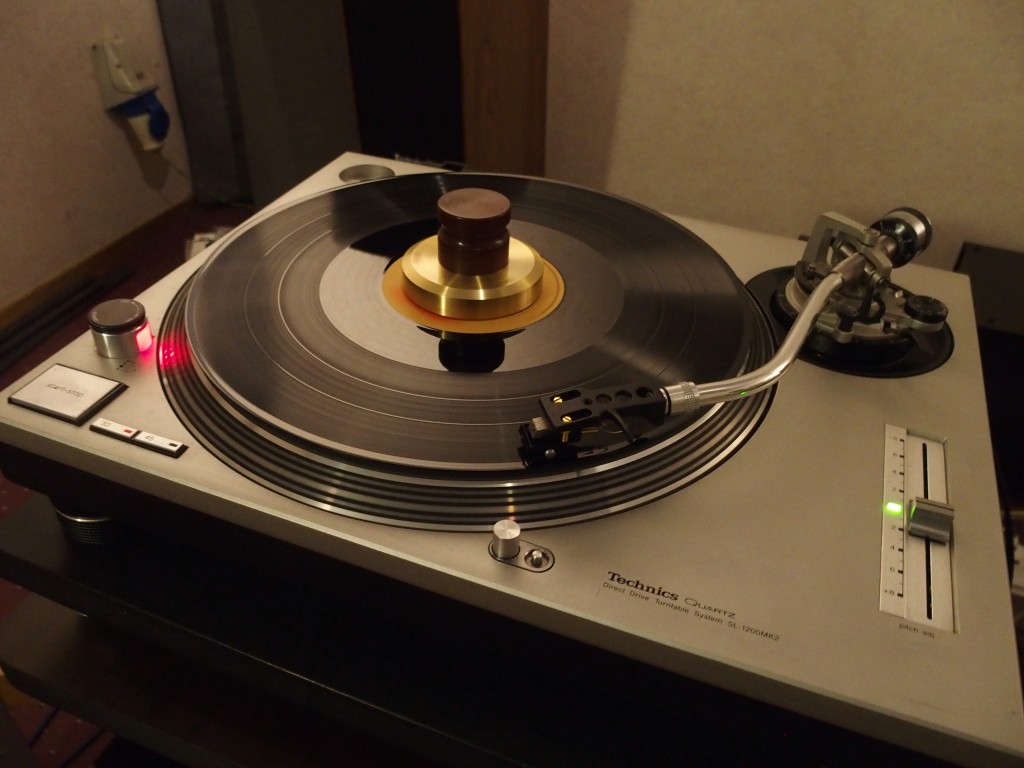
By Lam Seng Fatt
When I telephoned Adrian Wong of Audio Image to get more details about the vinyl-cleaning service he is offering, he probably sensed that I was sceptical about the effectiveness of his cleaning methods and challenged me to turn up at his showroom in Section 19, Petaling Jaya, with two dirty and noisy records.
So I took a few LPs from my collection, played them on my system and selected two LPs with the most clicks and pops – Blood On The Tracks by Bob Dylan and Dizzy Gillespie’s Big 4. Then I headed to Audio Image at about 3.30 pm today to find out just how effective the clean-up job would be.

Adrian Wong decided to use the Dizzy Gillespie LP to test the cleaning system. First he played the LP on a Technics SL-1200 direct-drive turntable with a Shure V15 cartridge. The clicks and pops could be heard from the lead-in groove – the LP was that dirty. The sound was closed-in and muffled.
First he proceeded to clean the LP with the record cleaning machine that he designed and sprayed it with his own cleaning solution. After the LP was vacuumed dry, he played it again on the turntable.
There was greater clarity, the sound opened up but there were still some clicks and pops.


Then he placed the LP in the Kirmuss Ultimate Ultrasonic Record Restoration System KA-RC-1 and set it to be cleaned with ultrasonic waves and pure water for five minutes. Though it is recommended to add some isopropyl alcohol in the pure water, Adrian prefers to use just water. It is not tap or filtered water, but reverse osmosis water. Distilled water can also be used.
After the ultrasonic treatment, he dried the LP with a piece of lint-free cloth and spun it again on the turntable. This time, it sounded quite good with an open soundstage and much less clicks and pops. More details could be heard.
Then he took the LP and sprayed a special surfactant solution supplied by Kirmuss on the LP and cleaned the grooves in a circular motion with a goat-hair brush. The surfactant solution is a combination of anti-bacteria, anti-fungus and anti-static formulations. If the LP is really dirty, there will be white sludge coming out from the grooves and you will have to clean the LP again until there is no more white stuff. However, the Dizzy Gillespie LP had already been cleaned and vacuumed in the first step of the cleaning process and there was no white sludge.

After that the LP was placed in the ultrasonic cleaner again for another five-minute session. After drying the LP, Adrian played it again, This time the music sounded cleaner and clearer with even less clicks and pops.
After that was the final step which was to spray the Kirmuss surfactant solution on the LP again, brush it into the grooves and let it dry. After the LP had undergone the entire cleaning process, it sounded fabulous with great clarity and extended bass. Stereo imaging was spot on and lots more details could be heard.

Adrian said there is no need to clean the LP again unless it gets very dirty. There could still be some static left, but it will decrease each time you play the LP and you can also use an anti-static gun such as the Zerostat. You may have to clean the stylus after playing the LP as the diamond could unearth the last bits of grime from the grooves.
The entire cleaning process costs RM30 per LP. So if you have a large collection of LPs numbering, say, 1,000 or 2,000, it would cost a small fortune to clean all of them. In that situation, you can either clean only a small selection of your favourite LPs or simply buy the Kirmuss Ultimate Ultrasonic Record Restoration System KA-RC-1 from Adrian.
The ultrasonic machine costs RM6,500 and a bottle of Kirmuss surfactant solution, a piece of lint-free cloth, the goat-hair brush and a towel for drying the machine come with the package. Adrian said replacement bottles of the Kirmuss anti-bacteria, anti-fungal and anti-static surfactant solution cost RM120 each.
Kirmuss has other standalone products for sale – stylus cleaner at RM100 per bottle and carbon fibre brush with parastatic felt brush at RM150 each. The goat-hair brush can be bought at RM90 each.
For more details, Adrian Wong can be reached at 016-600 1218. Or you can call his son, Joseph Wong, at 010-200 1992.
